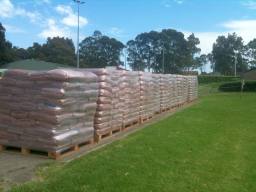The TERRE DAVIS product combines unique raw materials with special production techniques. The result is a product which binds together beautifully producing a firm and extremely durable clay court base. This is achieved by simply adding water and subsequent compaction. A rich red fine powder is then added enhancing its aesthetic appeal.
The surface does not shrink or swell making it highly resistant to cracking. It has never been known to delaminate or break up under the weight of the player.
PLAYING CHARACTERISTICS
All the features needed in a high quality clay court are found in the TERRE DAVIS product:
Footing:
This surface allows players to maintain balance when moving. Players are able to utilise a controlled slide and change direction comfortably. Movement skills are enhanced automatically.
Bounce:
The ball bounces slower and higher requiring players to learn patience, the ability to hit the ball from shoulder height and above.
Spin:
When the ball is hit with top spin it will lift off the surface, alternatively when hit with slice it will “stick” staying lower but not shoot as it does on other surfaces. Over time a wider range of shots and greater imagination is developed.
The Elephant logo symbolises Strength and Stability
“not all red clays
are the same”
MAINTENANCE
A sprinkler system is recommended as all clay courts need regular watering. However, hand watering is not arduous as the court absorbs the water readily and retains it. Rolling of the court is not required often after construction. Simple bagging and line sweeping combined with watering is all that is needed to keep the TERRE DAVIS court looking and playing beautifully.
ACCESSORIES
Sweeping mats, line sweepers, rollers et alia are all available on request.
LOGISTICS
Bringing the material to Australia is not a simple exercise. After the manufacturing process in Cremona, the bags are packed in containers, before being trucked and loaded at a nearby port. They are then on the high seas for approx. 8 weeks before landing in Australia. Next, the tons of material have to be trucked to a given site, unloaded and then the construction process begins.



